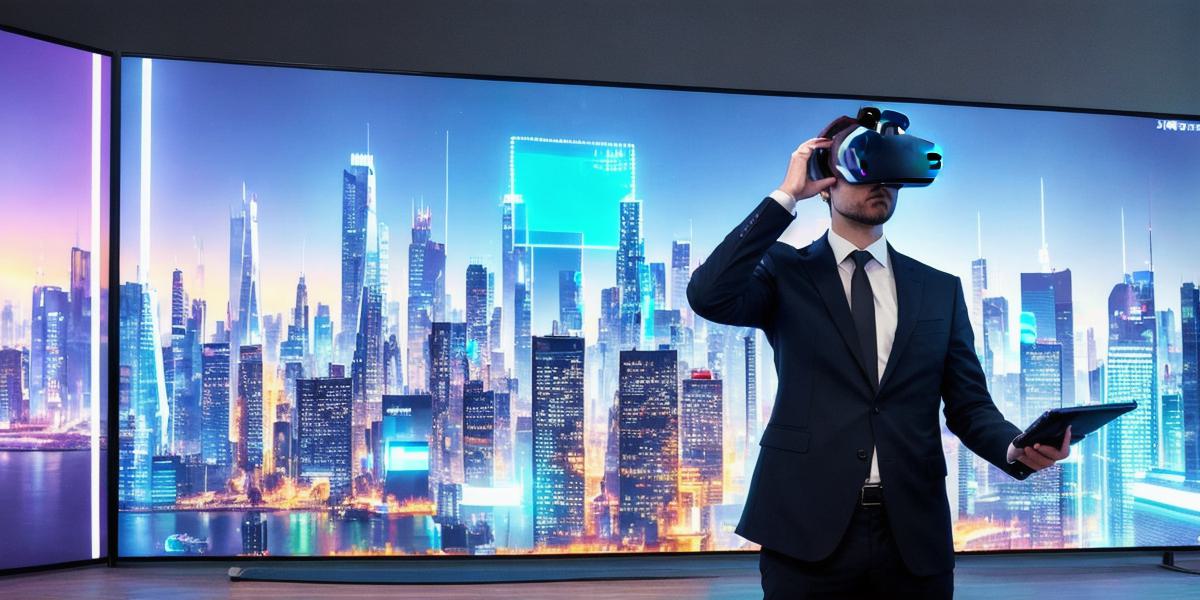Introduction
The metaverse is a virtual world where people can interact with each other and engage in various activities such as gaming, socializing, and even working. With the rapid growth of this digital realm, many developers are looking for the best platforms to create their own immersive experiences. In this guide, we will explore the top options available, along with their features and benefits.
1. Unity
Unity is one of the most popular game engines used for creating virtual reality (VR) and augmented reality (AR) applications. It allows developers to create 2D, 3D, and interactive experiences that can be accessed across multiple platforms, including VR headsets, mobile devices, and web browsers. Unity also supports multiplayer functionality, allowing users to join and play together in real-time.
One of the reasons why Unity is so popular among developers is its easy-to-use interface and extensive library of assets, which include pre-built environments, characters, and effects. Additionally, Unity supports scripting in C, which makes it easy for developers to create custom logic and behavior within their applications.
Case Study: The Virtual Production Company (VPC) used Unity to create a VR experience that allowed users to explore the interior of an aircraft carrier. The project was completed in just 8 weeks and received positive feedback from both clients and end-users.
2. Unreal Engine
Unreal Engine is another popular game engine that has gained widespread adoption for creating immersive experiences in the metaverse. It supports a wide range of features, including real-time rendering, physics simulation, and advanced AI capabilities. Unreal Engine also includes a powerful visual scripting system, which makes it easy for developers to create custom logic without needing to write code.
One of the key benefits of using Unreal Engine is its ability to support large-scale open worlds, which can be explored by users in real-time. This feature is particularly useful for creating metaverse experiences that require a lot of processing power and memory, such as VR simulations or massive multiplayer games.
Case Study: The virtual reality game "Beat Saber" was developed using Unreal Engine. It quickly gained popularity among gamers and has since become one of the most successful VR titles to date.
3. A-Frame
A-Frame is a web framework for building virtual experiences that can be accessed through web browsers. It supports a wide range of features, including 3D graphics, spatial audio, and motion tracking. A-Frame is particularly useful for creating metaverse experiences that are optimized for mobile devices, as it allows users to access the content directly in their web browsers without needing additional software or hardware.
One of the key benefits of using A-Frame is its simplicity and ease of use. Developers can create complex virtual environments with minimal coding, making it an ideal option for those who are new to metaverse development. Additionally, A-Frame supports a wide range of APIs and integrations, allowing developers to connect their experiences with other popular platforms and services.
Case Study: The virtual reality experience "A-Tisket, A-Tasket" was developed using A-Frame and has since received numerous accolades for its innovative gameplay and immersive environment.
Summary

Developing in the metaverse requires a combination of technical skills, creativity, and an understanding of user needs and preferences. By choosing the right platform for your project, you can create experiences that are both engaging and effective at achieving your goals. Whether you’re a seasoned developer or just starting out, there is no shortage of tools and resources available to help you bring your metaverse vision to life.




